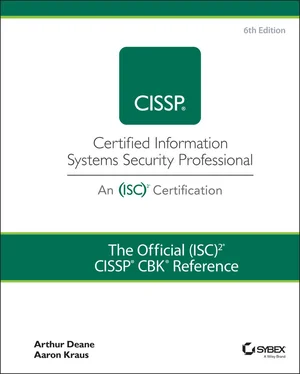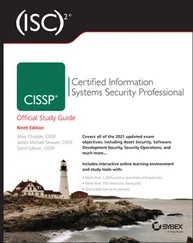Develop and Document the Scope and the Plan
The BCP itself is the organization's commitment to maintaining the operations of the business, and the steps the organization takes to do so. This plan focuses on the people, processes, and technologies on which the business relies to deliver goods and services to its customers. The information derived from your BIA activities should be used to document the scope of your business continuity plan.
The BCP must protect an organization's critical business functions and its customers and provide the capability for an organization to continue effective business operations at a service level and in a time period that meets any legal and regulatory requirements in addition to the organization's defined MTD, RTO, and RPO (discussed in the previous section).
The scope of the BCP must encompass all of the organization's operations, including each business area and within every geographic region that the organization does business. While there is no one-size-fits-all for business continuity planning, the scope of most plans includes the following:
Critical business functions
Threats, vulnerabilities, and risks
Data backup and recovery plan
BCP personnel
Communications plan
BCP testing requirements
Once your organization has completed a business impact assessment, you should have a list of CBFs and an understanding of your organization's threshold for downtime and loss for each of them. The next phase of continuity planning involves identifying the specific mechanisms and procedures to mitigate risks to your CBFs and maintain compliance with your established MTD, RTO, and RPO.
As with any good plan, a BCP involves people, processes, and technologies — in that order. In next three sections, we cover some of the requirements and techniques involved in protecting these three categories of assets.
People are always, without exception, your most valuable and critical asset. The first goal of any BCP must be to ensure the safety of your people during and after an emergency. In the context of BCP, “people” include your employees, contractors, customers, vendors, and any other living human being that may be affected by an adverse event.
After ensuring the safety of your people, you must ensure that they are provided with the resources necessary to continue working as normally as possible. This may include shelter (e.g., an alternate work site) and food they require to survive and complete their BCP and operational tasks.
A well-designed business continuity plan must include protocols for notifying all affected people (internal and external) that an adverse event has occurred. You must ensure that multiple methods of communications are in place to notify critical BCP personnel, in case one or more methods are unavailable due to the disaster. Further, management and key BCP stakeholders must receive regular status updates during a disaster to provide awareness and allow strategic decisions to be well-informed.
The BCP team must evaluate every critical business function and determine what resources must be available during a disaster. Your continuity plan should identify the critical supplies and logistics required to maintain critical operations, and it should establish a process to ensure those resources remain continuously available.
One of the most essential BCP processes assures an organization that its critical data processing facilities and capabilities remain operational during a disaster. Your organization should identify where and how you will continue your critical data processing functions. The most relevant method of addressing this topic is by developing processes for the use of alternate sites during a disaster. The primary recover site types are hot sites, cold sites, and warm sites. We cover these in Chapter 7.
Hardware and software failures — that's just part of the reality of technology. A business continuity plan must anticipate these failures and outline controls and procedures to mitigate the risk of technology failure. System and data backups are the most tried-and-true way that organizations address this risk. You must have a comprehensive backup process to ensure your critical systems and data are captured, stored, and available for recovery when necessary. You should maintain multiple copies of your most critical information. If your organization maintains on-premise systems (e.g., if you run a data center), for, one set of your backups must be stored offsite; this serves to protect at least one replica of your data in case a disaster destroys your primary location. If you use cloud-based systems, you should maintain backup copies in multiple cloud regions (or geographic locations where datacenters are located) so that your data is recoverable at any given time.
Aside from information backup, your BCP should establish a protocol for maintaining redundant systems to continue supporting your business during a significant negative event. Redundant electrical supplies, water supplies, telecommunication systems, and network connectivity systems are required to ensure continued operations during a disaster. Many organizations lease two or more internet service providers (ISPs), multiple utility providers, and at least two banking providers, in case the disaster originates with one of these providers rather than internal to the organization.
CONTRIBUTE TO AND ENFORCE PERSONNEL SECURITY POLICIES AND PROCEDURES
The Security and Risk Management domain of the CISSP CBK covers many of the foundational concepts necessary to build and manage secure systems and data. Because hardware, software, and technical controls tend to get all the attention, it's important that you keep in mind that the human element is perhaps the biggest part of information security. An essential part of your organization's security planning should be focused on policies and procedures to ensure the security of your employees. In this section, we cover topics such as candidate screening and hiring, employee onboarding and offboarding, managing external personnel (i.e., vendors, consultants, and contractors), and other important personnel security considerations.
Candidate Screening and Hiring
Candidate screening and hiring the right employees is a critical part of assuring the security of your company's systems and data. Not only do you need to make sure to hire the right fit for the job, but it's also critical that you are familiar with a candidate's background and history before bringing them into your organization and giving them access to your sensitive information.
There are a couple things your organization must do before beginning to recruit candidates for a position. First, the hiring manager should work with HR to clearly and concisely document the job description and responsibilities. Having a job description with well-documented responsibilities can help you recruit the right person for the job and can later be used as a measuring stick to assess the employee against the expectations set before they were hired. Next, you should identify the classification or sensitivity of the role, based on the level of damage that could done by a person in that role who intentionally or negligently violates security protocols. The classification or sensitivity assigned to a role (referred to as a risk designation by NIST, for example) should inform the types of authorizations an employee will receive once they are hired; as such, the thoroughness of your candidate screening process should match the security of the position that you're filling. As a CISSP, risk designation (or the equivalent in your jurisdiction) should be considered prior to granting any employee access to sensitive information.
Читать дальше












